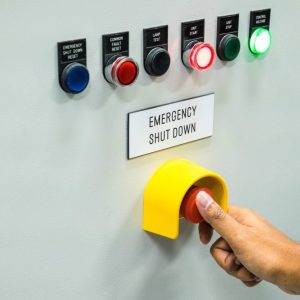

Overview of F&G and ESD Systems
The Fire and Gas (F&G) system and the Emergency Shutdown (ESD) system are essential for safety in industrial environments, such as oil and gas facilities and chemical plants. Though they have distinct purposes, these systems often work together as part of an overall safety and automation strategy.
F&G (Fire and Gas) System
Purpose: The F&G system detects and responds to fire and gas hazards. It monitors the environment for flammable gases, toxic gases, and fire indicators like smoke or heat.
Components: The system includes gas detectors, flame detectors, smoke detectors, heat detectors, and alarm systems.
Operation: Upon detecting a hazardous condition, such as a gas leak or fire, the F&G system activates alarms, starts ventilation systems, and may trigger fire suppression systems like sprinklers or foam systems.
Role: It serves as an early warning system to protect personnel and equipment by minimizing the impact of fire and gas-related incidents.
ESD (Emergency Shutdown) System
Purpose: The ESD system ensures a facility reaches a safe state during a critical emergency. It shuts down processes or equipment to prevent catastrophic events such as explosions, fires, or hazardous material releases.
Components: The ESD system consists of safety instrumented systems (SIS), emergency shutdown valves, relays, logic controllers, and manual shutdown stations.
Operation: When a critical condition is detected, like high pressure or temperature, the ESD system initiates a controlled shutdown, isolates hazardous areas, and ensures the facility is safely secured.
Role: It acts as a last defense line to prevent escalation into major disasters, protecting both personnel and the facility.
Key Differences
Function
- F&G: Detects fire and gas hazards and initiates responses to prevent escalation.
- ESD: Shuts down processes or equipment to avoid or mitigate catastrophic events.
Response
- F&G: Triggers alarms, activates ventilation, and engages fire suppression systems.
- ESD: Initiates shutdown sequences and isolates plant areas to prevent disaster.
Scope
- F&G: Monitors and detects specific hazards like fire and gas.
- ESD: Ensures overall facility safety by enabling a controlled shutdown in emergencies.
Integration
- Interaction: These systems often interact. For example, a fire detected by the F&G system may trigger an ESD if the situation requires a complete shutdown.
In summary, while both systems are crucial for safety, the F&G system focuses on detecting and responding to environmental hazards, whereas the ESD system is designed to shut down operations proactively to prevent major accidents.
